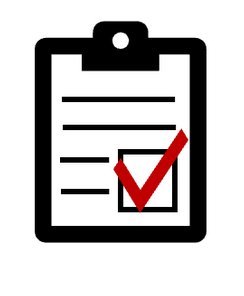Slidecasts Can Be A Powerful Tool For Advisors In Marketing; Here’s My Appraisal After Spending Hours Making My First SlideCast Hot
Write Review
Slidecasting is a way of syncing a slideshow with an audio track on the Web. Advisors can create a compelling marketing presentation and other content for distribution over the Web.
Slidecasts are another way of using SlideShare, which is a social app for sharing presentations.
I’ve previously written favorably about SlideShare. But I had used it back then only to upload a slideshow.
SlideShare Basics
SlideShare is great for making slideshows more popular. It’s very social.
Any slide show you upload to SlideShare gets roughly the same treatment as a video uploaded to YouTube.
For instance, you can click on an icon in the SlideShare player to view the slideshow in full screen mode. Seeing a slideshow full screen is a key feature.
But what’s really cool about SlideShare is that you’re involved in consuming this content. That makes this medium different from video or reading.
Requiring viewers to click to advance a slide engages you in the communication. You must be invested in it. It’s interactive. Plus, you can consume the information at your own speed, fast or slow.
In addition, each slideshow generates its own unique “embed” code, allowing anyone viewing your slide show to click on the “embed” code and copy and paste it into a blog or website.
Embedded video or a slideshow makes a website more interesting, and you should be familiar with this technique if you hope to succeed in the digital world.
Embedded video or a slideshow makes a website more interesting, and you should be familiar with this technique if you hope to succeed in the digital world.
Another benefit of SkdeShare is that viewers can tweet out a link to your slideshow, making every slideshow easy for sharing on social networks.
Until SlideShare came along, when you posted a slideshow presentation to your website, you might have made a little thumbnail picture for it and made that image the link visitors would click on to download your PowerPoint file. SlideShare makes viewing a slideshow easier and more engaging.
Instead of a static picture as a thumbnail, SlideShare creates a play button that shimmies when it loads or when you pass your cursor over it.
Slidecasting
All of these features are provided when you use SlideShare for slideshows. Slidecasts go much further.
Slidecasts are much “hotter” —in the Marshall McLuhan sense. Slidecasts communicate much more information than slideshows because you narrate them.
Adding an audio track to your slide show totally transforms the user experience. It’s much more engaging to hear someone speak to you about the slides you're viewing. So much more information is communicated by the accent of the narrator, whether the narrator is reading or speaking, and whether the speaker sounds credible.
The personal aspect of narrating your own slideshows is critical to engaging those who play your Slidecast.
How To Create A SlideCast
I spent last weekend creating my first Slidecast. The first version was close to six minutes long.
Creating Version 1—a six-slide show marketing Advisor Products—took me about six hours.
It took five hours to create six slides, and then it took another hour to upload and get Version 1 working on the Web.
To create a Slidecast, you simply add an MP3 audio file to your slideshow. That sounds easier than it actually is.
Creating the audio track is easy. I used Camtasia Studio, but you can download an MP3 recorder for free. I wrote my script and then spoke it into a microphone connected to my computer.
I did a light edit on Version 1.
I uploaded the MP3 file to SlideShare and then it took about an hour to learn and use SlideShare’s synchronization tool.
 The SlideShare sync tool let’s you set which slide is displayed in your slideshow when you are speaking. So you could, for example, set slide 2 to start 10 seconds into your audio track and then move to slide 3 after one minute of audio.
The SlideShare sync tool let’s you set which slide is displayed in your slideshow when you are speaking. So you could, for example, set slide 2 to start 10 seconds into your audio track and then move to slide 3 after one minute of audio.Version 1 went well and I was satisfied. However, Monday morning when I showed Version 1 of me Slidecast to my staff, they praised it but said it should be shorter.
I edited the MP3 audio file from nearly six minutes down to three, and added another slide.
Replacing the slide show and changing the audio file was a lot more difficult. Getting Version 2 posted took about eight hours, partly because SlideShare has some bugs.
Though I am a “Platinum” Pro licensee, SlideShare’s bugs really got in the way of getting the job done quickly. Replacing my slide and switching out a new MP 3 file was unnecessarily complicated. The server did not update quickly and that prevented the synchronization of my new audio and slideshow.
In addition, SlideShare’s lead-capturing system is also buggy. Though I repeatedly set it up so that a form would pop up capturing viewers’ contact information (leads) after my SlideCast ended, the form kept popping up after the penultimate slide. Finding that bug took a couple of hours.
Conclusion
Despite the hassle, SlideShare is an excellent tool. Its bugs will be fixed.
Being able to narrate your own slideshow is a very personal way of communicating complex ideas.
Being able to make a slideshow about why you do what you do for a living and then embed it on your home page is powerful.
My first SlideCast is embedded below.
Advisor Products Overview
View more webinars from Advisor Products
This Website Is For Financial Professionals Only
User reviews
There are no user reviews for this listing.









